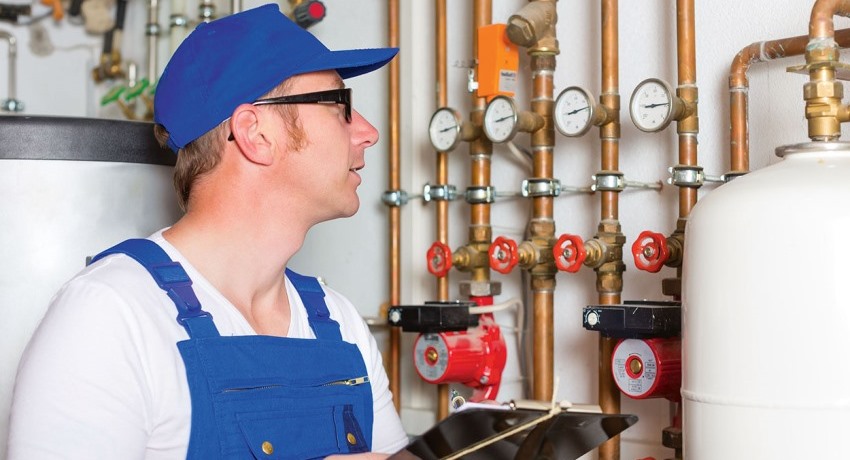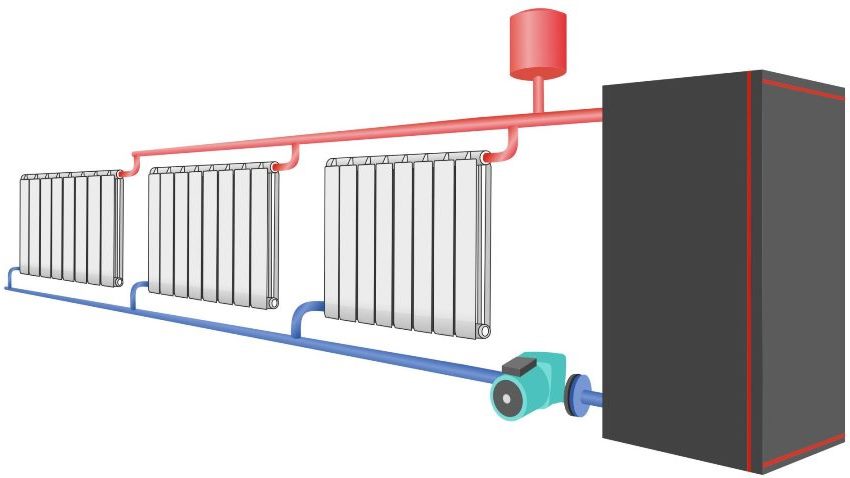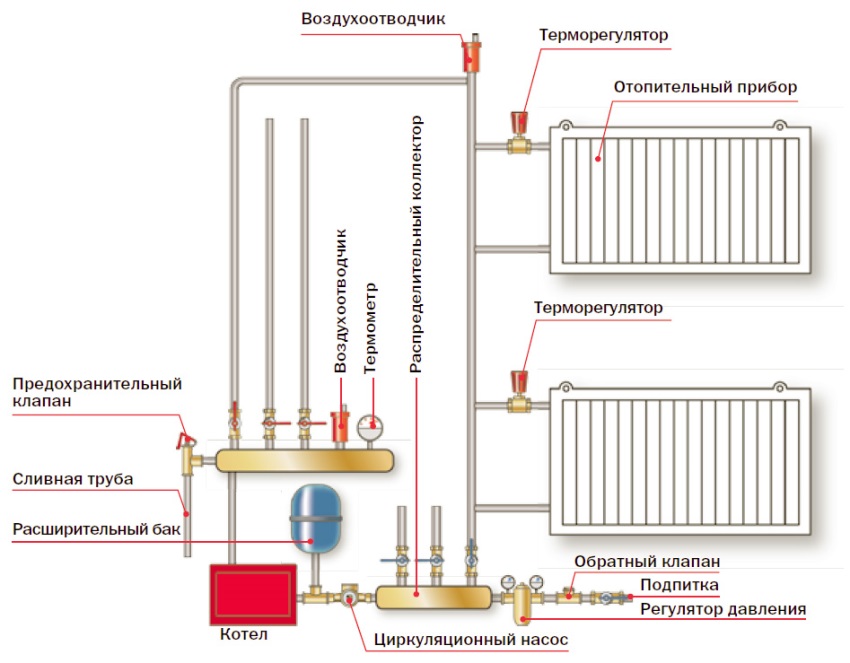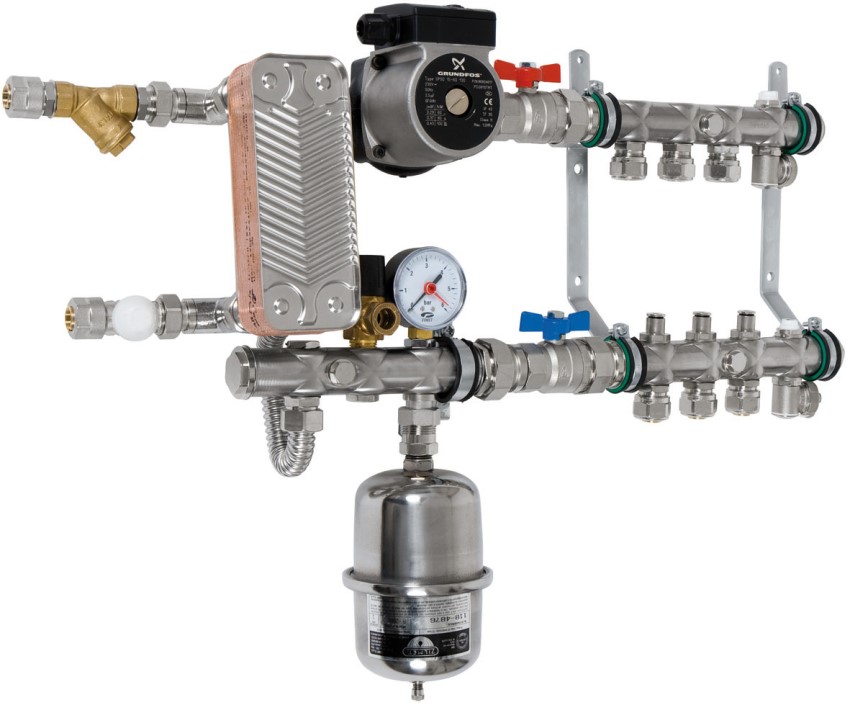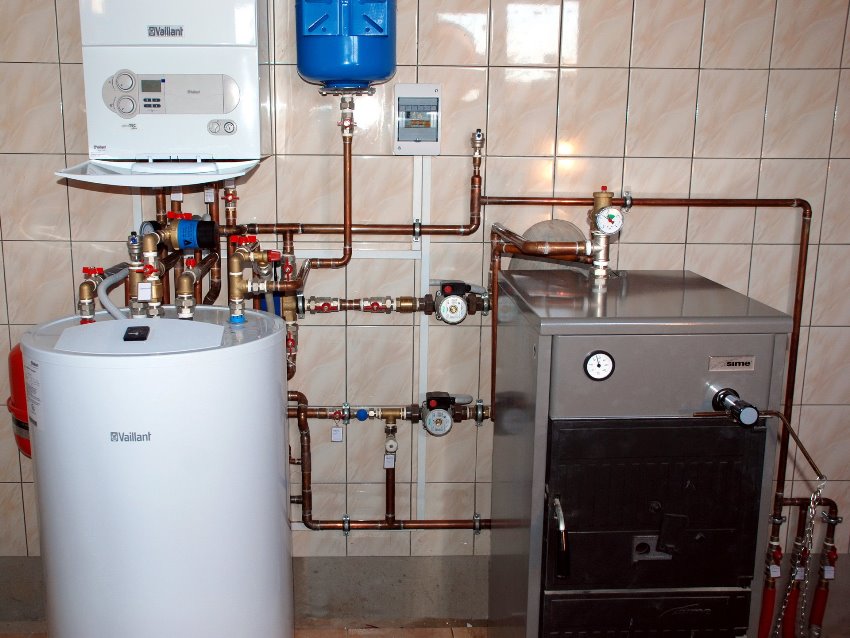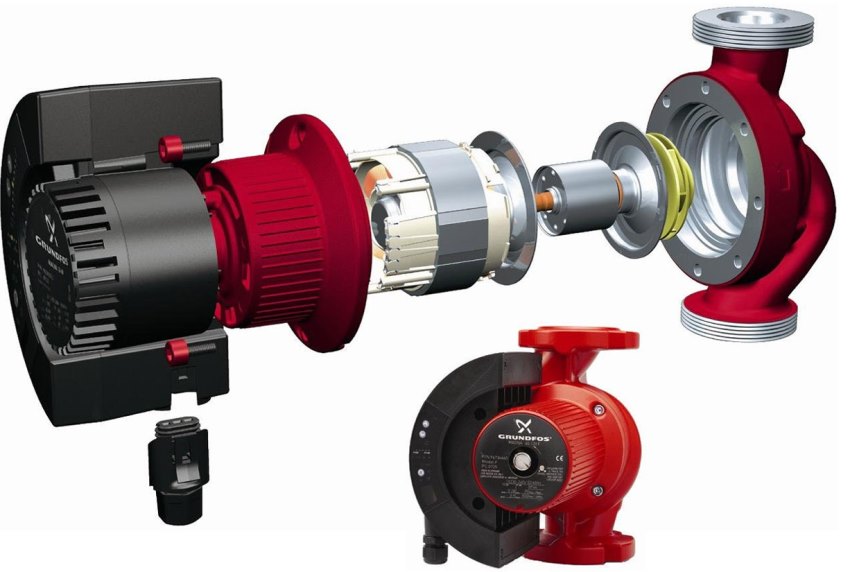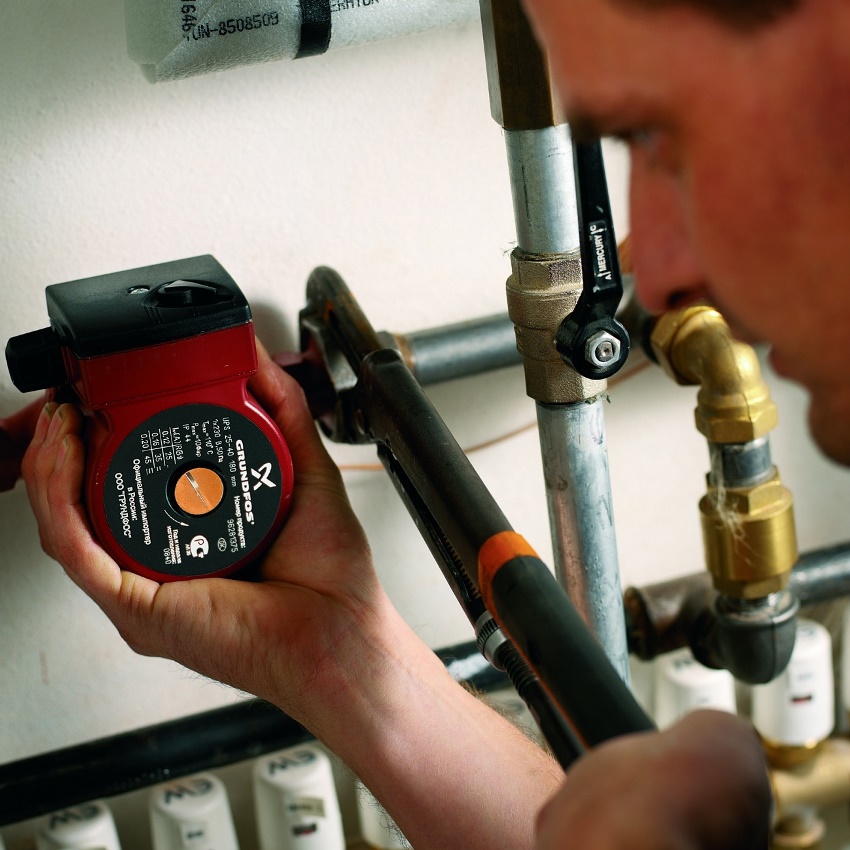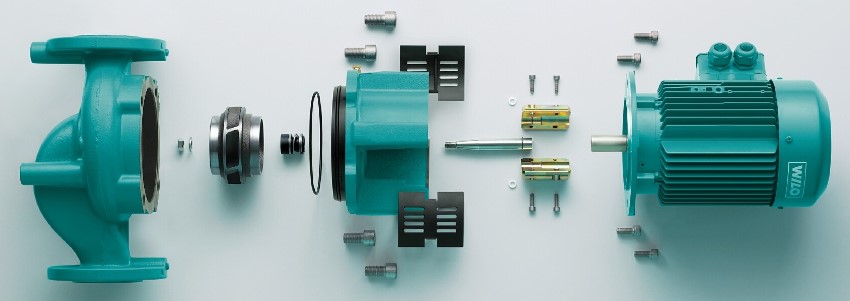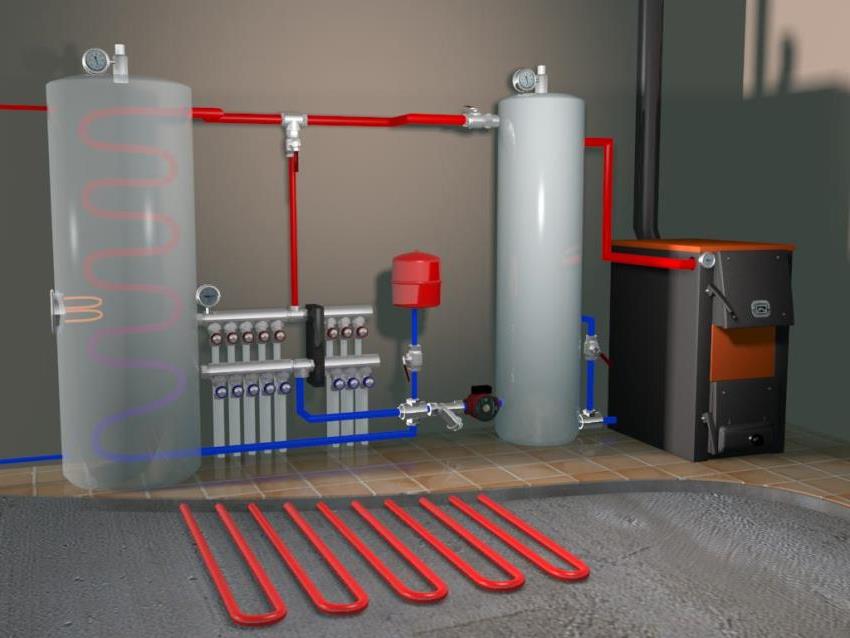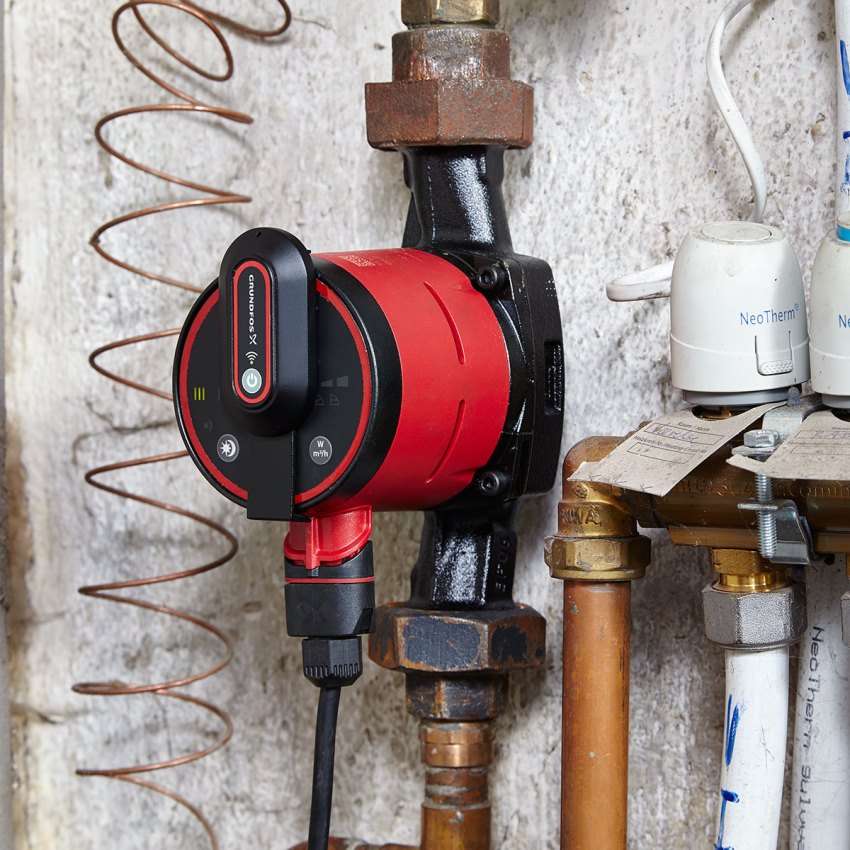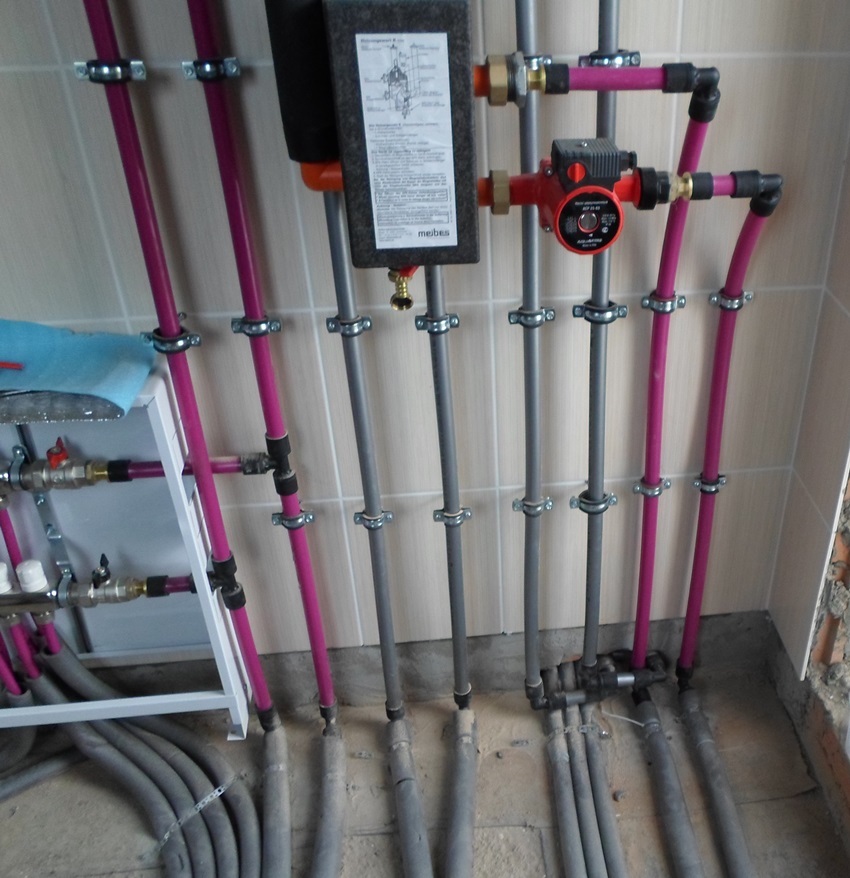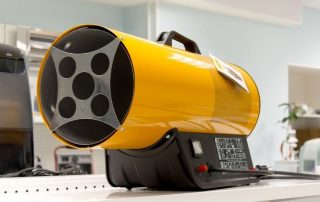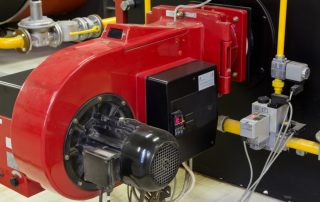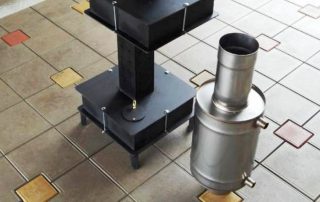A water pump for heating is a device that is used to increase the efficiency of autonomous heating systems for private houses and summer cottages. Such an apparatus affects the movement of the coolant, which occurs continuously. Today, there are many varieties of such circulation pumps. To select a suitable device, you must familiarize yourself with its principle of operation, as well as technical characteristics.
Content [Hide]
- 1 The principle of operation and technical characteristics of circulation pumps for heating systems
- 2 Advantages of circulation pumps for heating systems
- 3 Varieties of circulation pumps for heating private houses
- 4 Circulation pumps for heating Grundfos
- 5 Circulation pumps for heating Wilo
- 6 How to choose a circulation pump for heating: tips
- 7 Features of calculating a circulation pump for a heating system
- 8 Water pump for heating: installation
- 9 Uninterruptible Power Supply for Heating Circulation Pump
The principle of operation and technical characteristics of circulation pumps for heating systems
A pump of this type is a device inside which an engine and a working shaft are located. Its main function is to pump the working fluid. The popularity of such devices in autonomous heating structures is due to the fact that they allow more efficient heating of the building.
The principle of operation of the circulation pump is quite simple. When it starts, the rotor begins to act on the impeller (rotate it). Due to this, a reduced pressure is created at the inlet, and, on the contrary, increased pressure at the outlet. The speed of movement of the working fluid along the communications increases, which reduces the financial costs of heating a private house.
Helpful information! A similar device operates from a conventional electrical network, the voltage of which is 220 V. The power of the device depends on its type, as well as on which mode is used during its operation. This indicator varies from 25 to 100 W / h.
In many models, you can select the speed mode, which is selected individually, depending on the technical characteristics of the autonomous heating communication. And also circulation pumps for water supply are equipped with a certain marking, which indicates the main characteristics of the device.
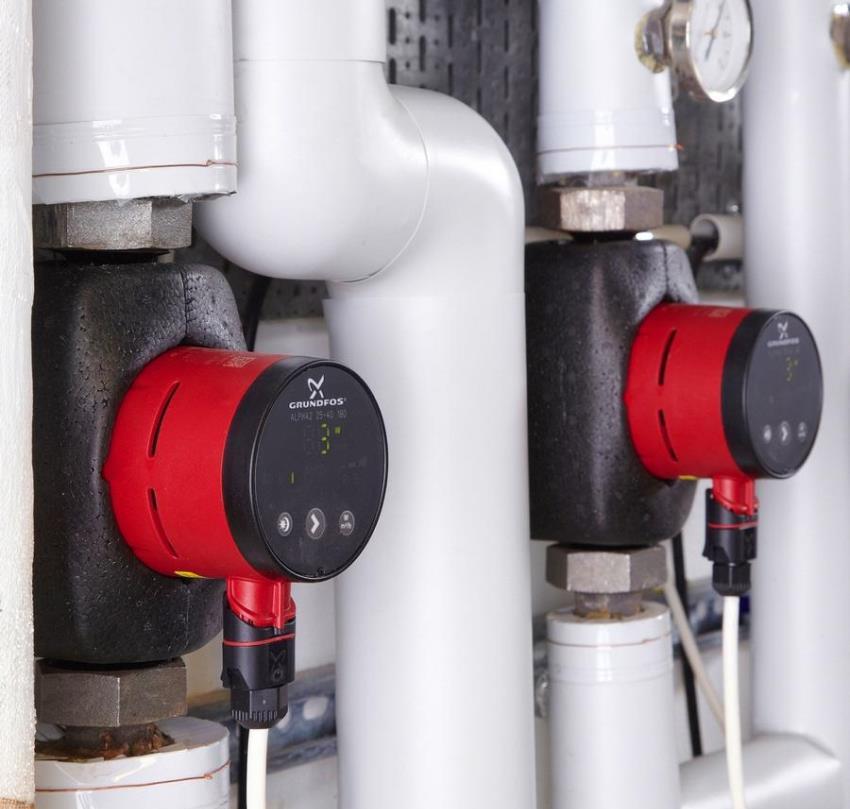
Most models of circulation pumps are equipped with the ability to select a speed mode, which is selected depending on the technical characteristics of the heating communication
Advantages of circulation pumps for heating systems
Previously, the installation of heating communications in private houses did not provide for the installation of pumping equipment. The working medium in such systems moved through pipes by gravity. Today, some cheap solid fuel boilers do not have integrated pumps. This is explained quite simply - the company that produces the boilers does not know the parameters of the heating circuit. For such structures, it is recommended to purchase a circulation pumping device.
There are several advantages to installing a pump in the heating system of a private house. For example, the load on the heating boiler is reduced due to the equalization of temperatures in the inlet and outlet pipes. Another advantage of the circulation pump is that it provides uniform heating of rooms due to the same temperature of the working environment at any point of the heating ring.
And also when installing such a device, it becomes possible to quickly regulate the temperature of the coolant in the heating pipes. And it should also be said that when starting an autonomous heating structure, the boiler warms up much faster if such a pump is integrated into the system.
The principle of operation of circulation pumps eliminates the need to position the pipe at a certain slope to the boiler. And also it becomes possible to use less thick pipes in communication. This not only saves space, but also reduces the cost of the heating structure as a whole.
Of the minuses of this device, only one can be distinguished - dependence on the electrical network. If there are frequent interruptions in the network, then the use of the device will be difficult. However, this problem can be dealt with quite simply by installing an uninterruptible power supply (UPS).
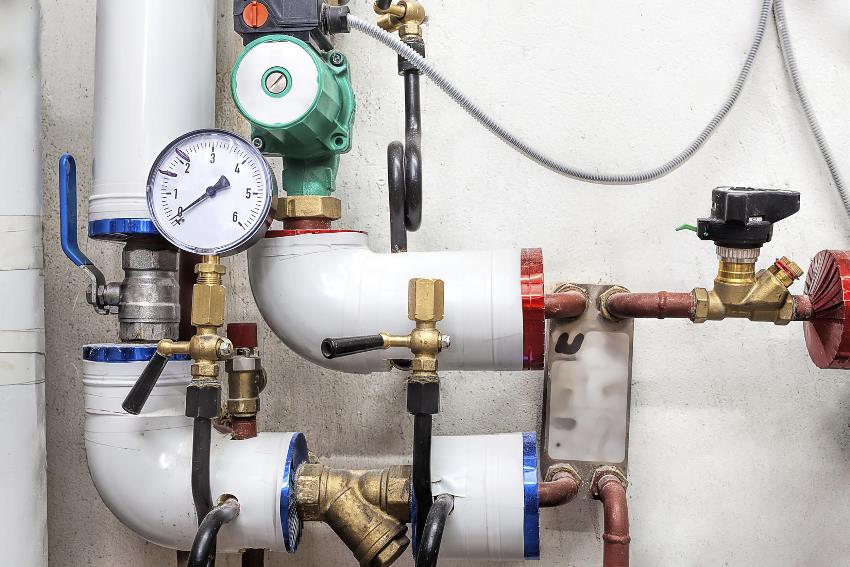
The use of a circulation pump eliminates the need to place pipes at a certain slope towards the boiler
Varieties of circulation pumps for heating private houses
Today, all models of such devices are classified according to the principle of action into two types:
- Dry;
- "Wet".
Many people are interested in the question of how to choose a circulation pump for installation in a private house. The "dry" type devices are larger in size and include a motor compartment extended to the side. Such models are rarely installed in residential buildings. This is due to the fact that they make a lot of noise during operation. However, such devices have a high efficiency - up to 80%.
Note! Devices of the "dry" type require careful maintenance. This is due to the fact that their sealing elements wear out very quickly and must be replaced in time.
As a rule, such devices are mounted in separate outbuildings due to their noise level. The operational area of dry type pumps is heat points, which are distinguished by high power. And they can also be used in autonomous heating communications that need maximum performance. In private houses, such devices are practically not installed.
Features of "wet" pumps for heating in a private house
Wet type devices are much more compact and versatile. Their installation is carried out by inserting them into the pipeline structure, in contrast to "dry" devices that require console installation. And they also do not require the organization of an additional cooling system, since excess heat is given to the working environment that passes through them.
The performance of the "wet" circulation pumps is lower. This is due to the fact that the rotor operates in a liquid working medium, which provides a certain resistance. Therefore, the efficiency of "wet" pumps ranges from 50 to 60%. Nevertheless, the use of such equipment is considered the most optimal in the conditions of autonomous heating systems.
The characteristics of circulation pumps of this type allow them to be installed even in living rooms. During operation, they practically do not make noise. And it is also worth saying that the low performance of these devices fully pays off, since their operation requires much less electrical energy.
The power of small models used in private homes is approximately 25-50 watts, which is comparable to the energy consumed by an ordinary light bulb. It is also worth saying that circulation pumps for heating (12 Volts) are perfect for small private houses.
The service life of a "wet" circulating pump can be several decades (under normal use). Such devices are characterized by unpretentious maintenance and do not require preventive maintenance.
Thus, these products are perfect for home use. Another advantage of these pumps is their design. It includes individual modules (assemblies) that can be easily replaced if necessary.
Circulation pumps for heating Grundfos
Pumps from this brand are the most demanded in the modern heating equipment market. Depending on the control capabilities and design features, all Grundfos products are divided into:
- unregulated (UPS series);
- adjustable (ALPHA series).
UPS series models are the most demanded among domestic consumers. The operational sphere of such devices is open or closed autonomous heating communication of a private house.
Helpful information! In some cases, Grundfos UPS pumps are used in small industrial premises.
The popularity of Grundfos circulation pumps is also due to the fact that they are distinguished by their affordable cost and high quality. Today they are produced in the following countries: Germany, Denmark, China.
When selecting a pump online in an online store, you may come across models that differ in their technical characteristics. Consider the types of Grundfos UPS devices that can be purchased via the Internet:
- UPS 25-40 / 60/80;
- UPS 32-40 / 60/80.
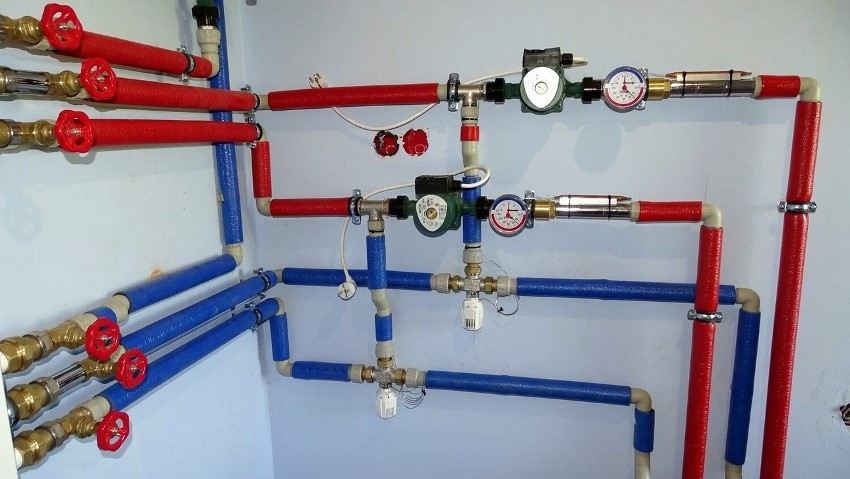
Technical characteristics of water pumps (depending on the model) allow you to raise the height of the working medium by 4, 6 or 8 m
The numbers indicated in the model name indicate its mounting characteristics. The first number indicates the cross-sectional index of the pump union nuts, which are made in most cases from cast iron material. In some cases, nuts with a diameter of 40 mm are found, however, products with a section of 25 and 32 mm are most often used.
The second number corresponds to the height. Depending on the type of device, the height of the working medium column can be 4, 6 or 8 m.
Related article:
Heating options for a country house: choosing a boiler
Boiler selection by power and fuel type. Advantages, disadvantages, features and price of solid fuel, gas, electrical units.
These numbers will help answer the question that many owners of private houses have: how to choose a circulation pump for heating. Therefore, in no case can they be ignored. The price of circulation pumps "Grundfos UPS" ranges from 4,000 to 40,000 rubles, depending on the model and technical equipment.
Which is better to buy a circulation pump for heating a private house: the ALPHA series
The adjustable range of pumps from the Grundfos company is represented by three main models, which belong to the same series (ALPHA). Consider the types of these devices, depending on the functionality:
- ALPHA2 L;
- ALPHA2;
- ALPHA3.
ALPHA2 L. Grundfos heating pumps of this series have limited functionality and have 7 operating modes. It should be said that ALPHA2 L can be used in such heating structures as underfloor heating. It includes a system that allows you to regulate the pressure of the coolant in the communication. Air is removed from the circulation pump ALPHA2 L by means of "pushing out", which distinguishes it from the devices of the UPS series. The selection of the required mode is carried out quite simply - by pressing a button on the control unit.
ALPHA2. Pumps of this type have 9 operating modes and are more versatile from an operational point of view. It is also worth saying that such devices include two additional functions that allow you to customize the device, depending on the season and time of day. Thanks to this, there is an opportunity for additional savings in finances. ALPHA2 pumps are compatible with almost all modern solid fuel boilers.
Helpful information! The cost of this series of pumps ranges from 6,000 to 25,000 rubles.
Separately, it should be said that the Grundfos ALPHA2 circulation pump for heating has another mode, which is called AUTOADAPT. It allows you to automatically change the parameters of the device, depending on the change of the season. Thus, the pressure in the system is regulated by a complex computational process that occurs continuously.
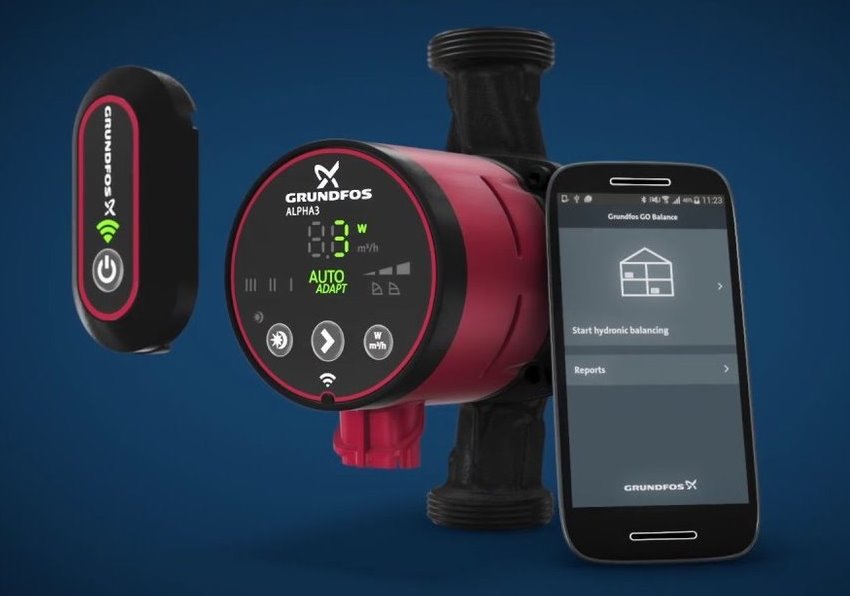
The ALPHA3 pump model is equipped with a special unit that allows you to transfer data about the operation of the circulation device to a smartphone
ALPHA3. This device is an improved model of the previous circulation pump. The main difference between ALPHA3 and ALPHA2 is that the owners can independently adjust the pressure in the heating communication.
When selecting a Grundfos pump, it is recommended to pay attention to the fact that the ALPHA3 model is equipped with a special unit called the ALPHA Reader. This device allows you to transfer data on the operation of the circulation device to a smartphone. To use this function, you need to download a special program (GRUNDFOS Go Balance) to your mobile device.
Circulation pumps for heating Wilo
Pumps from the Vilo brand are also very popular among consumers. This equipment is manufactured in Germany and is of high quality and long service life. The design of the “Vilo” devices takes into account the presence of a “wet” rotor, and their principle of operation is based on the direct contact of the impeller with the coolant. The price range of Wilo devices is quite wide (from 4,000 to 55,000 rubles).
Today, there are 4 main series of Wilo circulation pumps:
- STAR;
- TOP;
- STRATOS;
- YONOS.
WILO STAR. Devices of this series, as a rule, are used in autonomous heating communications of private houses with a small area. Such devices are very popular as they differ in democratic cost. There are two types of VILO STAR circulation pumps: RS, RSD.
As for the performance of the "VILO STAR" device, it is able to provide the required pressure in a standard heating system. The technical characteristics of the circulation pump for heating WILO STAR allow maintaining the required pressure in the communication, which has an area of up to 750 m².
The dimensions of the STAR series device are compact, which is also an important advantage. The installation length of the device is 18 cm and the weight ranges from 3 to 5 kg.
WILO TOP. Such circulation devices are used for installation in heating structures with an area of up to 1400 m². A feature of this equipment is considered to be that it is equipped with heat-insulating material. Thus, VILO TOP pumps can be installed not only indoors, but also outside. Such devices are designed to work in communications, the pressure in which ranges from 6 to 10 bar (atmospheres).
Separately, it should be said that WILO TOP devices have a flange design. There are several advanced models of the "TOP" series, which have the following markings: RL, S, Z. WILO TOP circulating pumps are often used in factories and are resistant to aggressive media.
WILO STRATOS. This series of devices appeared relatively recently. VILO STRATOS circulating pumps are distinguished by an electronic control system and are used in heating structures with an area exceeding 1400 m². They are compatible with modern boilers with a power rating of 25 kW or more.
Note! The performance of WILO STRATOS devices is increased in comparison with previous models and reaches 16 bar. They are perfect for energy-saving heating communications.
WILO YONOS. One of the latest series from Wilo. Such circulation pumps include an electronic control unit, as well as the function of removing solid particles from the working environment of heating communication.
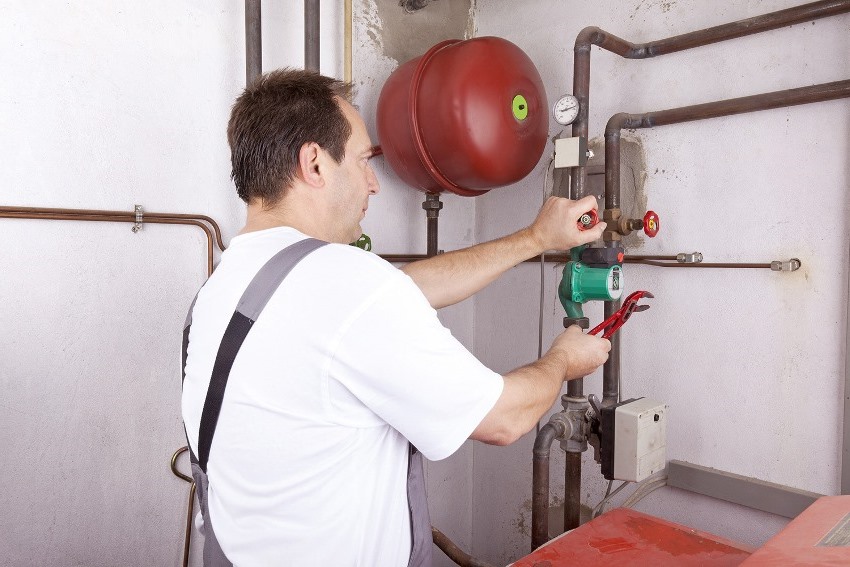
The installation process of circulation pumps is quite simple and you can handle it without the involvement of specialists.
How to choose a circulation pump for heating: tips
Many are interested in the question of how to choose a circulation pump for heating. To select this product for a specific heating service, you need to pay attention to several factors. Most of these devices are visually similar to each other, however, they can differ greatly in their technical characteristics.
For private use, devices are chosen that operate on a standard network with a voltage of 220 V. A very important parameter is the power of the device. It depends on two main factors: the model and the mode in which the pump operates. Household appliances have a power rating that does not exceed 50-70 watts.
Also, experts recommend paying attention to the temperature of the coolant. All domestic circulation pumps are limited in this indicator and can be used in heating systems with temperatures up to 110 ° C.
How to choose a circulation pump for heating, focusing on geometric parameters? From the point of view of geometric indicators, the installation length of the device plays an important role, as well as the indicator of the section of the threaded part of the device. Most pumps are installed on pipes by means of union nuts, which are also called American. As a rule, such elements are included in the package of the device. The standard cross-section values that apply to domestic heating circuits are 25 and 32 mm. And the installation length of the device can be 13 or 18 cm.
Among other things, it is worth paying attention to the markings that are applied to the pump housing. It often indicates the protection class of the electrical device, as well as the maximum outlet pressure. The first parameter is standard for most modern models and is designated IP44. The maximum outlet pressure is generally 10 bar.
If necessary, you can always consult with a specialist who will help you choose the right device for your heating structure. And you can also ask the question you are interested in on one of the specialized forums on the Internet.
How to choose a circulation pump for heating, depending on performance
Another important parameter that should be considered when choosing this equipment is its performance. This indicator indicates the amount of working medium that the device is capable of pumping over a certain unit of time (m³ / hour). And it is also worth considering the amount of pressure that the pump is able to create, calculated in meters.
In most cases, the main technical characteristics of such devices are indicated in their name. For example, if you parse the name of the device "Grundfos UPS 32-80", then the first two digits mean the diameter of the nozzles (32 mm), and the second - the pressure value, which is 8 m.
Note! When choosing the required device, it is imperative to calculate it for a specific heating system. This will allow you to purchase the most suitable circulation device.
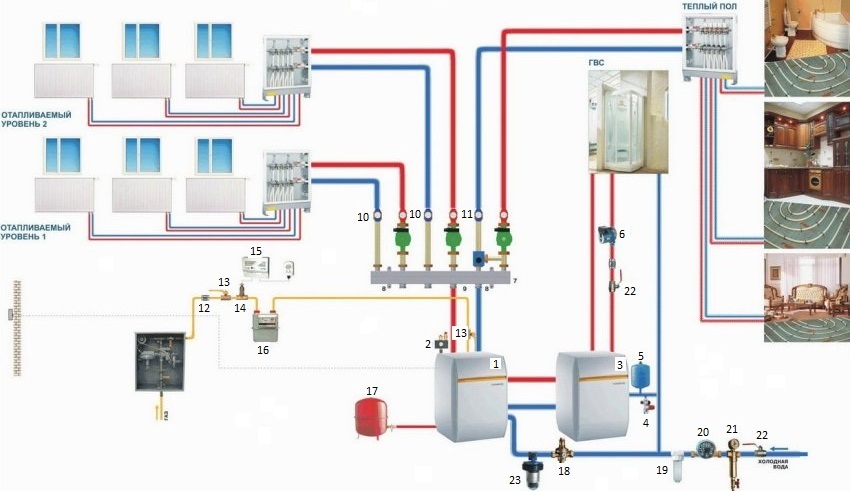
Heating scheme for a house with a floor-standing boiler, weather-dependent automation and a boiler: 1 - boiler; 2 - set of safety devices; 3 - boiler; 4 - boiler safety group 3/4 ″ 7 bar; 5 - hydraulic accumulator 12l / 10 bar; 6 - pump; 7 - 3-circuit collector; 8 - bracket with a set of fasteners; 9 - boiler connection kit (1.0 and 1.2 m); 10 - straight module; 11 - mixing module with an electric drive; 12 - KTZ-20 Du 20; 13 - crane 11B27P Du 20; 14 - valve KEG 9720 Du 20 (220 V); 15 - signaling device; 16 - gas meter; 17 — expansion tank 35 l / 3 bar; 18 - make-up valve; 19 - fine filter cartridge 1 ″; twenty - water meter; 21 - filter with manual washing 1 ″; 22 - ball valve for water; 23 - polyphosphate dispenser
The selection of a circulation pump for a heating system must be approached as competently as possible. Therefore, it is worth considering even such moments as the state of the premises and the peculiarities of the climatic region in which you live. If your house has good thermal insulation, then it is enough to get by with a device with low power (and vice versa).
You also need to take into account the dependence of the pump power on the climatic region. In this case, the following pattern can be traced: the colder the climate of the area in which the residential building is located, the more powerful a circulation device is needed. If necessary, experts in specialized stores can help you answer the question of how to choose a circulation pump for heating.
Features of calculating a circulation pump for a heating system
Power calculation is a very important operation that is necessary when choosing a water pump. When buying a device that is too powerful, the water in the communication will make noise, and if you take a device with a small performance index, then the house will warm up unevenly.
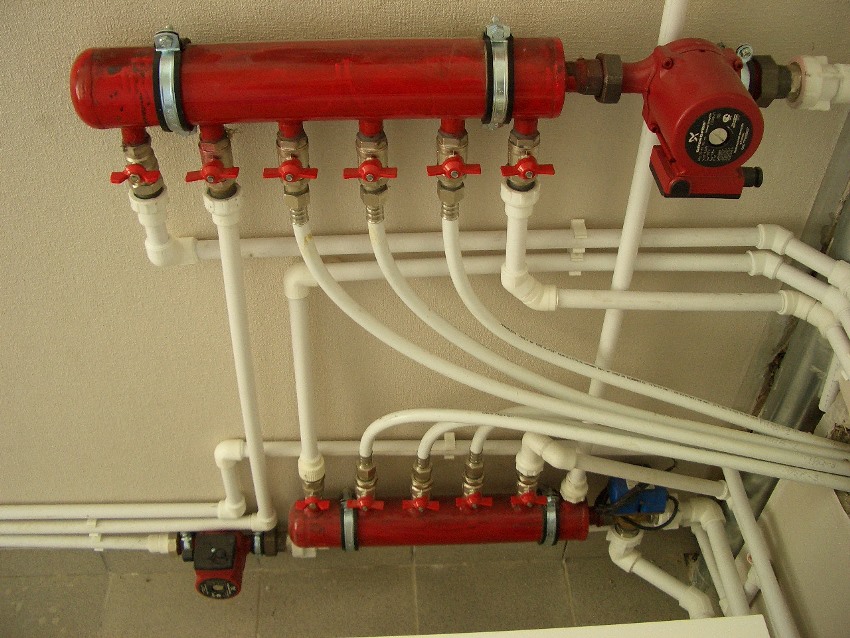
When choosing a suitable circulation pump, two parameters should be taken into account - engine performance and the amount of supply head
To buy a circulation pump for a heating system (specific), in fact, you need to calculate only two parameters: engine performance and the amount of supply pressure.
The operating power rating of the circulation pump is derived from the total thermal performance of the heating structure. From this it follows that the device must pump the volume of the coolant in such an amount that it is enough to heat all radiators in a residential building. Calculating the operating power of a device is an individual procedure, since each house requires a different amount of resources.
There are two popular ways to determine the operating power of a water pump:
- using an online calculator;
- through formulas.
In the first case, you need to find the corresponding online calculator on the Internet using the search box of your browser. The second method allows you to calculate the power more accurately. Consider the formula by which you can determine this indicator:
X = 3600U (A x B)where:
Y - heat costs required to heat a certain area of the house;
A - indicator of thermal conductivity of water, which is 4.187 kJ / kg;
B - temperature difference between supply and return. In most cases, this figure is 10-20 ° C.

If there are difficulties in calculating the operating power of the pump, you should consult a specialist or use an online calculator
Helpful information! For installation on a heating circuit in private houses with an area of 100 m², a device with an operating power of 10 kW is sufficient. Thus, at least 1 kW of power is required for 10 m².
The characteristics of the circulation pump for heating, indicated on its housing, can also help in determining the operating power.
Water pump for heating: installation
The correct installation of the water pump determines how well it will cope with its functions, as well as the efficiency of heating communication in general. There are several basic recommendations that should be followed when carrying out installation work.
How to install a circulation pump for heating correctly? Installation of such equipment on the heating circuit is carried out only after the water has been cut off in it. It is very important to remember that the rotor axis of the device must be horizontal. Installation of this element in a vertical plane is strictly prohibited. It is also recommended to install a filter in front of the circulation device, which is necessary in order to trap solid foreign elements of the working medium.
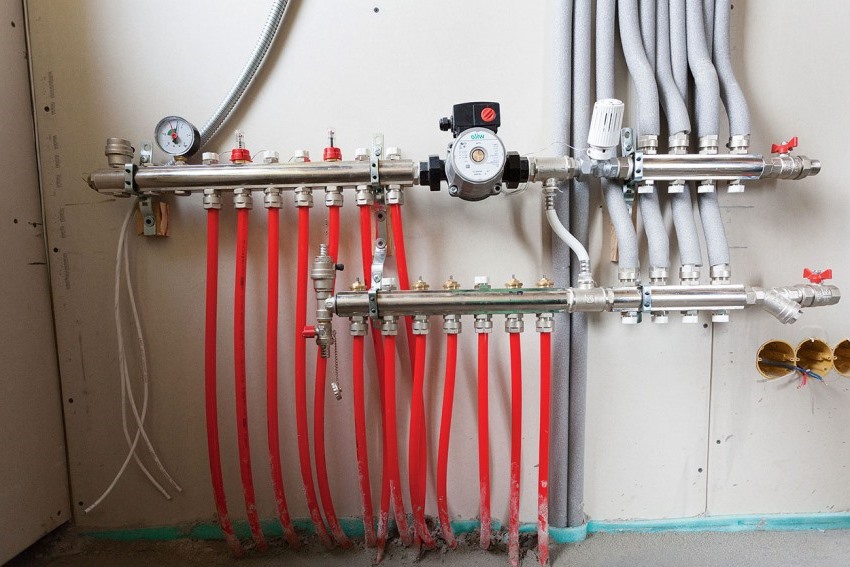
The installation of the circulation pump in the underfloor heating system is optimally carried out on the supply pipe
If you plan to install a circulation pump in the underfloor heating system, then you need to place it at the correct point on the circuit. The most suitable option is installation on a supply pipe. This is due to the fact that the risk of air congestion is minimized in it.
Do not forget about the sealing of the joints, which is done by means of a special FUM tape. After installing the equipment, it is necessary to check its operability. For this, a test run is carried out, however, before this, it is necessary to take care of removing air from the system.
Knowing how to properly install a pump for heating, you can save a lot, since such work is not cheap for professionals. But if you do not have confidence in your own abilities, then it is better to use the services of a master.
Uninterruptible Power Supply for Heating Circulation Pump
A UPS is an emergency power device that is installed if there is a power outage problem. Electricity interruptions can harm the heating communication, associated not only with stopping heating, but also with the failure of its individual components.
Note! Today there is a huge selection of UPSs for heating circulation pumps. All of them differ in their characteristics, therefore, when choosing, it is imperative to check the compatibility of the UPS with pumping equipment.
The principle of operation of the UPS is quite simple: during the operation of the heating equipment from the mains, the device accumulates energy and, in the event of a failure, gives it back. The UPS is a fully automated device and therefore eliminates human intervention.
You can buy a UPS for a heating circulation pump in a specialized store or by completing an order online. The cost of an uninterruptible power supply ranges from 2,000 to 30,000 rubles.
Circulation pumps for heating communications are an effective way to increase system performance and save money. And also the purchase of such equipment allows you to carry out more accurate control of the heating operation in your home.
